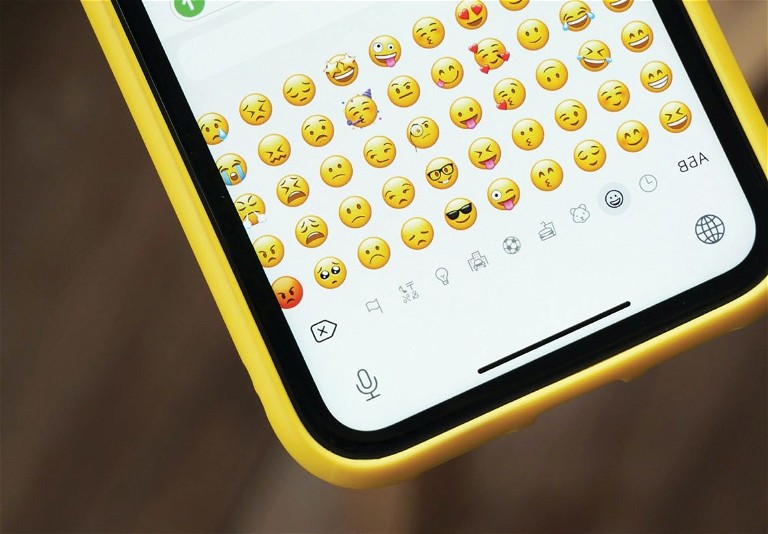NEWS AND EVENTS
{ COUNSELLING IT }

Technology
Update
with Dr Angela Lewis
Photo: Unsplash
Welcome to 2024. This year’s first column is a grab-bag, starting with making our online security stronger and ending with the world of emojis.
Two-factor authentication
With the number of online accounts most people use, it can be challenging to ensure they’re all protected against the ongoing problem of cybercriminals trying to illegally access login credentials.
One way we can significantly bolster the security of our online accounts is to employ two-factor authentication. Some of us will already be familiar with two-factor authentication as it is required for MyGov accounts, while those with Gmail accounts will have noticed an automatic prompt encouraging its use. When two-factor authentication has been set up, the user is asked to provide their first authentication method (for example, a password or pin), then provide a second method of identification to access their online account or system.
The second method is either an SMS security code (currently the most common method), an ondevice prompt or even a fingerprint scan. When there are two or more methods of identification required, the practice is known as multi-factor authentication.
Two-factor authentication is easy to set up and most online systems (banking, email, Facebook, Google, LinkedIn and so on) provide it, so just check out the user settings for the relevant account.
PS: Whether you decide to employ two-factor authentication or not, you should ensure you have anti-virus software installed and running.
Emojis
Emojis (often still called emoticons) are the small digital images or icons people use online to express an idea or emotion – the smiley face (🙂) is the simplest form.
Many people use keyboard combinations to create emojis – for example, they might use the colon, dash, right bracket to produce the smiley face. But did you know there is an easier way? Hold down the Windows key (on the left side of your keyboard, near the Z) and press the full stop key. This action brings up the emoji panel in most apps, including in MS Word and Outlook. Once you’ve opened the panel, simply click on the required symbol.

Photo: Unsplash
However, be warned that specific emojis can have different meanings across different generations. For example, a recent study by the Adobe Group found that many of those in the Gen Z bracket (those born between 1995 and 2010, and the first generation known to ‘zoom’ the internet) are taking offence at some routinely used emojis such as the thumbs up; apparently, some Gen Zers are calling out this popular emoji for being ‘rude’ and ‘hostile’, even saying they feel attacked whenever they see it used in the workplace. They believe that if someone wants to communicate ‘well done’, for example, they should write it. Purportedly, Gen Zers only use the thumbs up in a sarcastic fashion. Other emojis this generation dislikes (or only use when interacting with those they perceive as of an older generation) are the lipstick kiss and the OK hand. If you are curious to know how Gen Zers prefer to use their emojis, quickly Google ‘How Gen Z uses emojis’. It’s quite surprising to see how they have subverted the original uses and meanings – starting with the skull 💀 being their preferred emoji for laughter!
Nomophia
The term nomophia is short for ‘no mobile-phone phobia’. According to Healthline.org, symptoms include:
■ worry, fear or panic when you think about not having your phone or being unable to use it;
■ anxiousness and agitation if you have to put your phone down or know you won’t be able to use it for a while;
■ panic or anxiety if you briefly can’t find your phone; and
■ irritation, stress or anxiety when you can’t check your phone.
A recent online survey of 1000 people in the UK by CNN Business found that almost two-thirds (66 per cent) of respondents experienced nomophia. The youngest age group (18 to 24) topped the list, with 77% having experienced it, which was 11% more than for the second most affected group, those aged from 25 to 34.
PowerPoint: the difference between the PPT and PPTX extensions
PPT is the default file extension for saving presentations in PowerPoint 2003 and earlier versions, while PPTX is the default file extension for saving presentations in PowerPoint 2007 and later versions. If you open a presentation previously saved as .ppt and wish to save it in a more recent version of PowerPoint, you will be prompted to save it as a .pptx. It’s fine to do this. ■

All website addresses and user instructions supplied were correct at the time of submission and neither ACA nor Dr Angela Lewis receive any payment or gratuity for publication of any URLs presented here.